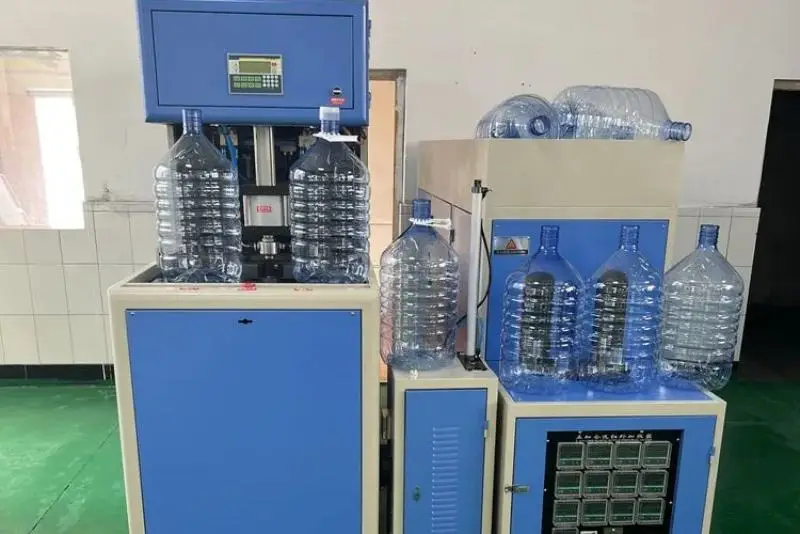At present, most bottle blowing machines are still two-step bottle blowing machines, that is, plastic raw materials must be made into preforms first, and then blown. Today, environmentally friendly plastics made of PET are generally used.
1. Principle of bottle blowing
The bottle blowing process of the bottle blowing machine is divided into two parts.
1.1 Preheating
The preform (embryo) is irradiated with an infrared high-temperature lamp to heat and soften the bad (embryo) body part of the preform (embryo). In order to maintain the shape of the bottle mouth, the mouth of the preform (embryo) does not need to be heated.
Therefore, a cooling device is needed to cool it.
1.2 Blow molding
This stage is to place the preheated bottle preform (embryo) into the already prepared blow mold and inflate it with high pressure. The preform (embryo) is blown into the required bottle.
The fully automatic bottle blowing machine combines the two operations of bottle blowing through the operation of the robot, eliminating the manual process of placing the preheated bottle into the blow mold. Greatly speed up the production speed. Molding diagram of bottle blowing machine
2. Process flow of bottle blowing machine
The blow molding process of the bottle blowing machine is a bidirectional stretching process. During this process, the PET chains extend, orient and arrange in two directions, thereby increasing the mechanical properties of the bottle wall and improving the tensile, tensile and impact strength. And has good air tightness. Although stretching helps to improve strength, it should not be over-stretched. The stretch-to-blow ratio must be controlled: the radial direction should not exceed 3.5 to 4.2, and the axial direction should not exceed 2.8 to 3.1. The wall thickness of the preform should not exceed 4.5mm.
Bottle blowing is carried out between the glass transition temperature and the crystallization temperature, which is generally controlled between 90 and 120 degrees. In this range, PET behaves in a highly elastic state and becomes a transparent bottle after rapid blow molding and cooling. In the one-step method, this temperature is determined by the length of cooling time during the injection molding process (such as Aoki bottle blowing machine), so the relationship between the injection and blowing stations must be well connected.
The blow molding process includes: stretching – first blow – second blow. The three actions take a very short time, but they must be coordinated well, especially the first two steps determine the overall distribution of the material and the quality of the bottle blowing. Therefore, it is necessary to adjust: stretching starting timing, stretching speed, pre-blowing starting and ending timing, pre-blowing pressure, pre-blowing air flow, etc. If possible, it is best to control the overall temperature distribution of the preform. The temperature gradient between the inner and outer walls of the billet.
During the rapid blow molding and cooling process, induced stress is generated in the bottle wall. For inflatable beverage bottles, it can resist internal pressure, which is beneficial, but for hot-fill bottles, it is necessary to ensure that it is fully released above the glass transition temperature.

